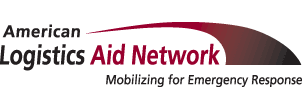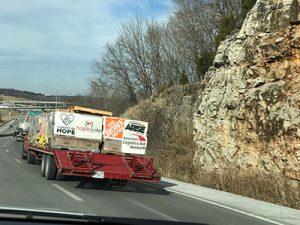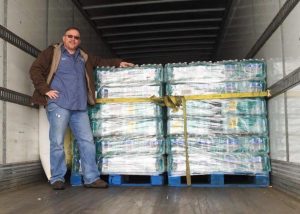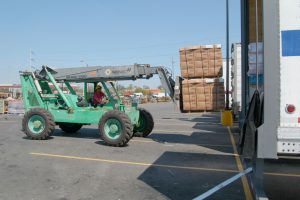
I fly on a regular basis (taking two or three trips a month isn’t unusual for me). So I’ve sat through A LOT of safety announcements. And without sounding like a bragging goody two shoes, I have to tell you that I pay attention every time. I also read the safety information card – and visualize myself doing everything printed there.
Granted, there have been some flights where I’ve had to force myself to stay awake long enough to do it. But I do it anyway, because I want to make sure I’ll be ready to help myself and others if something bad actually happens.
Anyway, as I was sitting on my most recent flight it occurred to me that much of what I was hearing and reading was a fitting metaphor for how we should all embark upon disaster preparation, especially as the next hurricane season approaches.
Which is why I hope you’ll direct your attention to the remainder of this blog post for a few brief but important safety announcements. . . .
Individuals: Make Sure You Put On Your Own Oxygen Mask Before Helping Others
No matter how altruistic you are, you can’t be a help to others if you’re the one who winds up needing assistance. As a result, one of the most practical things you can do to help the cause of disaster relief is to be prepared to take care of yourselves and your loved ones.
Among other things, this means building a robust disaster kit consisting of enough food, water, medicine and pet supplies to sustain you and your family for a minimum of 72 hours (or longer if you live in remote or island locations) and ensuring you have a battery-operated or hand crank radio and myriad other items such as sleeping bags, a first aid kit, dust masks and moist towelettes. (For more good ideas about what to put in your kit, look here.)
It also means not waiting until the last minute – when everyone and their brother is making an eleventh hour run to Sam’s Club or Publix – in order to build this kit, because if you do you’ll undoubtedly find yourself behind the power curve.
Last but certainly not least, it means heeding local safety advice about either evacuating in a timely manner or staying put so that you don’t wind up being the one in need of a daring and dangerous rescue. (No offense. But I’d rather NOT see you on the national news.)
If you’re self-sufficient, proactive and compliant with experts’ directives, then public, corporate and nonprofit resources won’t need to be channeled toward helping you and can instead be directed toward assisting others.
Individuals: Remain Seated Throughout The Duration Of Take-Off
When large-scale disasters happen, many of us have a natural urge to go immediately to the impacted area to help or to start collecting materials to send there. It’s why spontaneous volunteerism and collection drives happen after every disaster.
But unfortunately these well-intentioned efforts can often create more problems than they solve, because they’re not working in concert with the many organized public, private and non-profit sector efforts that are also activating to deliver relief. In some cases, they can actually get in the way.
So unless you’re a member of the National Guard or part of a first response group that has been asked to mobilize, the best thing you can do immediately after a disaster is stay right where you are, in your own community.
I’m not saying that you can’t help disaster survivors, because monetary donations to the relief organizations that assist these survivors are always needed and welcome. Nor am I implying that you can’t volunteer, because there are many local non-profits that are probably in dire need of your time, talents and energy; in fact they may be short-handed because so much attention is being directed towards a disaster that is making headline news.
However I am saying that when devastating events occur, certain kinds of help are undoubtedly more useful than others – and that when it comes to deciding where you should begin to offer your goods and services, there’s often no place like home.
To Be Continued
There’s a lot more I’d like to share about this subject – so much so that I’d like to stop here and continue this discussion in my next blog post. So stay tuned. Meanwhile, if you happen to see me on a flight, be sure to say hello. Just wait to do it until after I finish reading the safety card!
Kathy





